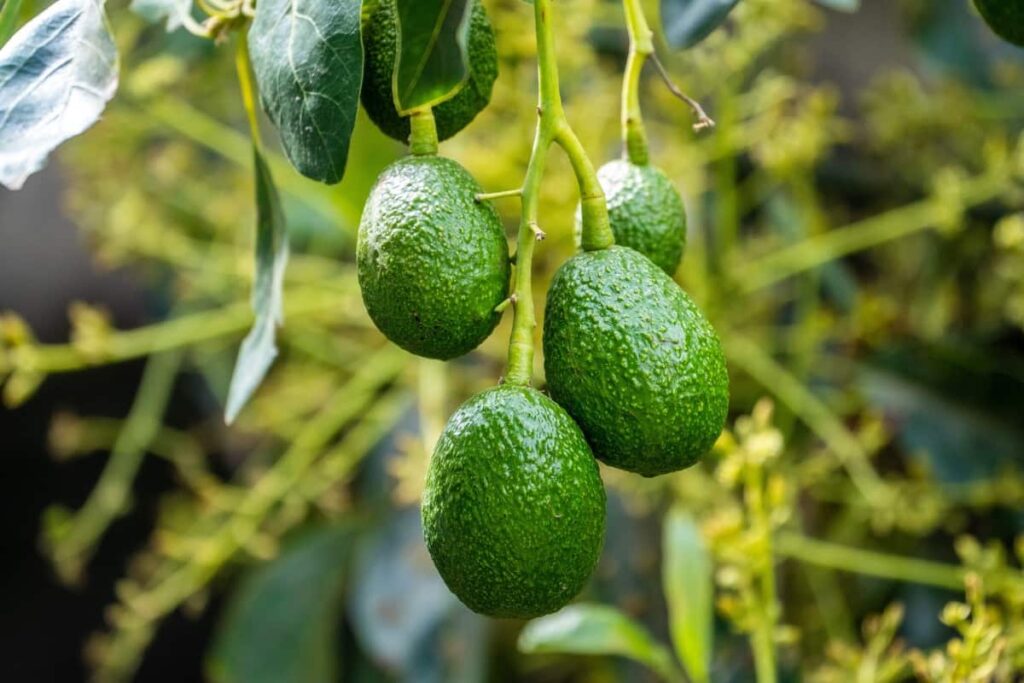
Avocado trees are popular fruit trees grown in many parts of the world. They originate in Central and South America. And are known for their delicious, creamy fruit. Avocado trees can grow quite large and reach up to 65 feet in height. They have evergreen leaves and produce flowers that are greenish-yellow in color.
Avocado fruit is oval and has green or purple skin. The fruit’s flesh is pale yellow or pale green and has a creamy, buttery texture. Avocado fruit is known for its high-fat content and is used in salads, sandwiches, and dips. Fruit is also a good source of nutrients, including vitamins C, E, and K, potassium, and fiber. Avocado trees grow best in warm, frost-free climates and require well-draining soil and regular watering.
How to fertilize Avocado trees for insane fruit set
Planting & growing Avacado
Soil
Soil drainage is an essential factor when selecting an orchard site for avocado trees. Avocado trees are susceptible to poorly-drained conditions and can be prone to root rot, which can be caused by the soil-borne fungus Phytophthora. This fungus thrives in moist, poorly-drained soils and can cause severe damage to avocado trees. Choosing a site with well-draining soil is essential to ensure that your avocado trees have the best chance of success. In high-rainfall areas, at least 1.5 meters of well-drained soil is recommended.
At least one meter of well-drained soil is recommended in lower rainfall areas. Mounding the tree rows before planting can also help improve soil drainage and prevent water from damming up around the roots of the trees. It’s essential to design the mounds carefully, so they don’t cause soil erosion or prevent water from draining away quickly. In addition to good soil drainage, avocado trees require a warm climate and well-draining soil to thrive. They also need regular watering and fertilization to grow and produce healthy fruit.
Climate
Avocado trees are sensitive to frost and can be damaged if temperatures drop low. Mature trees can tolerate temperatures below -4°C for short periods, but they are best grown in frost-free areas. If frost does occur, it is essential to protect the trees if they have flower buds, flowers, or fruit present, as these can be damaged by frost. Avocado trees can also tolerate temperatures as high as 40°C for short periods.
Still, fruit damage and losses may occur in very hot conditions. Some growers in hot areas use overhead sprinklers to provide evaporative cooling to protect the crop during heat waves. This can help preserve the fruit and reduce heat stress on the trees. Choosing an appropriate location for the avocado tree is important based on your area’s climate and weather conditions.
In case you missed it: Drip Fertigation in Flower Crops: A Practical Guide for Floriculture Farmers
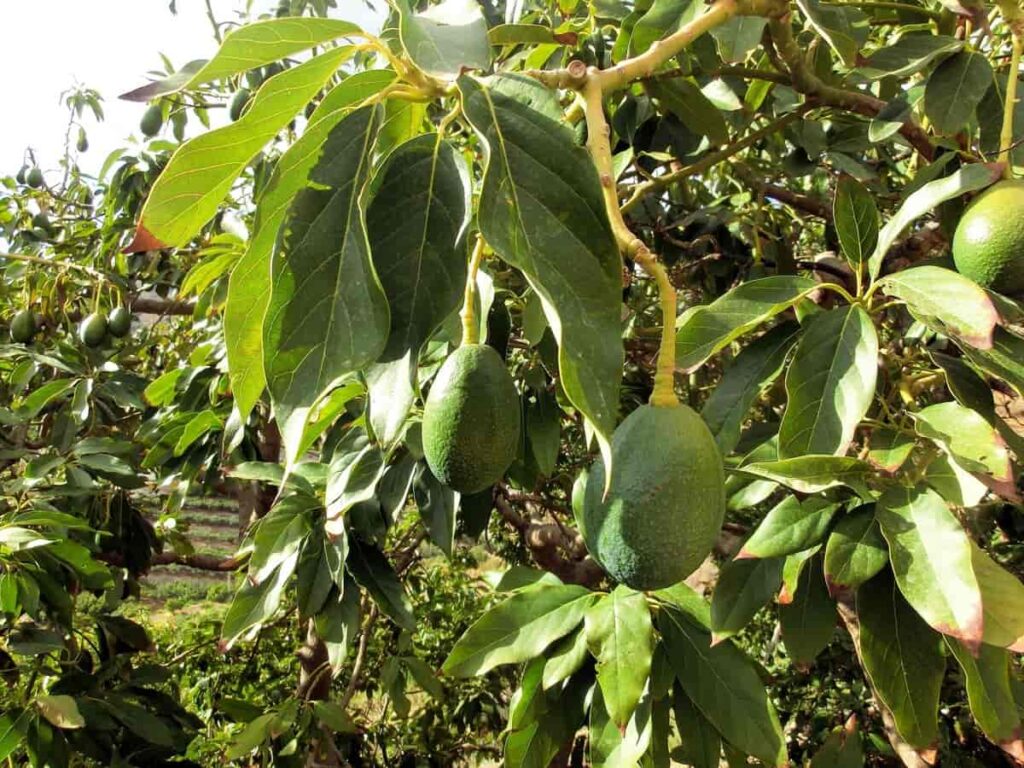
Tree spacing for Avocado
The spacing of avocado trees in an orchard can significantly impact their growth and productivity. Tree spacing depends on choosing high, medium, or low-density plantings. High-density plantings involve planting more than 500 trees per hectare, using a spacing of around 6 meters by 3 meters. These plantings provide earlier returns but are more expensive to set up.
Because the trees are planted closer together, they will need to be pruned earlier to keep them in shape. High-density plantings may be more challenging to manage in warmer areas because tree growth is faster. Low-density plantings involve planting 200 trees or fewer per hectare, using a spacing of around 10 meters by 5 meters. These plantings are easier to manage but provide lower early returns per unit area.
At low density, trees are generally allowed to grow larger, which can increase picking costs, reduce picker safety, and produce less fruit of lower quality. As a compromise, you can choose medium-density spacings, such as 9 meters by 6 meters. This will provide a balance between early returns and ease of management.
Factors affecting fruitset in Avocado
- Environmental conditions: Avocado trees require a specific range of temperature, light, and humidity to produce fruit. Extreme temperatures or insufficient light can inhibit fruit set.
- Nutrient deficiencies: Avocado trees need a balance of nutrients to produce fruit. Deficiencies in nutrients such as nitrogen, potassium, and zinc can affect fruit sets.
- Pest and disease problems: Pests and diseases can damage the flowers and fruit of avocado trees, leading to reduced fruit set.
- Pruning: Pruning avocado trees can affect the number of flowers and fruit produced. More pruning can reduce fruit sets, while more can lead to overcrowding and reduced fruit size.
- Age of the tree: Avocado trees take several years to reach maturity and produce fruit. Young trees may only produce fruit once they are several years old.
- Pollination: Avocado trees require cross-pollination to produce fruit. The fruit set may be reduced if no compatible avocado trees are nearby.
By properly caring for your avocado tree and addressing any issues that arise, you can help ensure a good fruit set.
Avocado fertilizer requirements
Avocado trees have specific nutrient requirements to grow and produce healthy fruit. They need a balanced fertilization program with the right amounts of essential nutrients such as nitrogen, phosphorus, and potassium. To grow properly, avocado trees also need trace elements such as zinc, iron, and manganese.
In case you missed it: Growing Okra Organically in Tamil Nadu: Cultivation Practices and Production Management
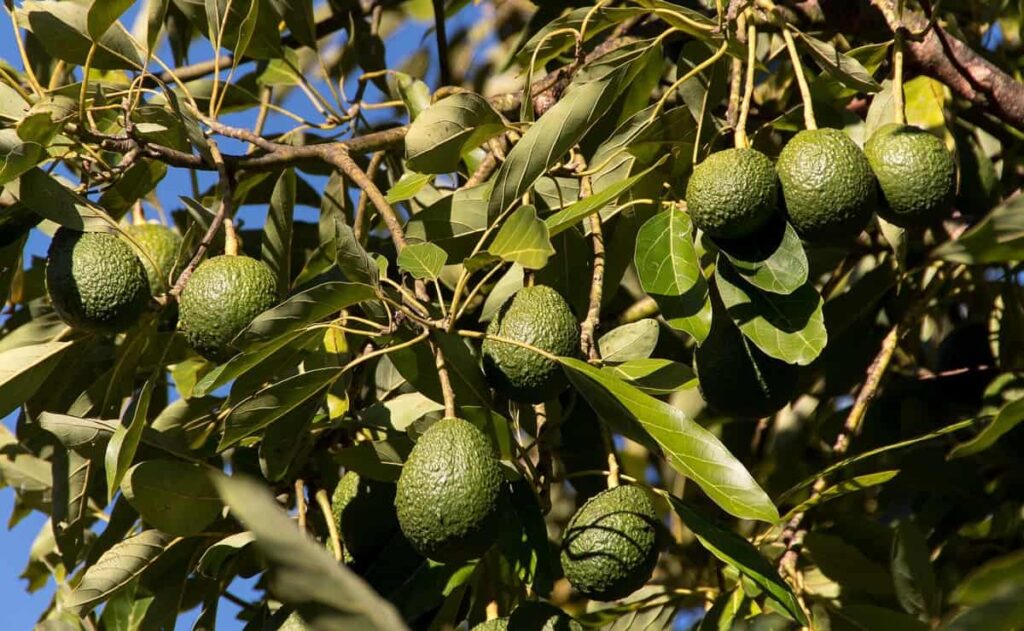
General fertilizer requirements for avocado trees
- Nitrogen is an essential nutrient that promotes growth and development in avocado trees. Nitrogen deficiency can be identified by stunted growth and small, pale leaves.
- Potassium is important for promoting faster growth and fruit production in avocado trees. If the soil has potassium, the tree may mature slowly and not produce fruit. Signs of potassium deficiency include brown, red necrotic spots on older leaves, thin and thick twigs, and narrow, small leaves.
- Zinc is an essential nutrient that helps avocado trees bear healthy fruit. Zinc deficiency can be detected through a soil test or by observing necrotic leaf margins and short internodes.
- Iron is important for promoting healthy plants and healthy fruit. Iron deficiency can be caused by excessive irrigation and poor drainage. Short-term symptoms of iron deficiency include narrow dark green stripes on the leaves and interveinal yellowish color along the veins. This problem can lead to smaller leaves and reduced yields if not corrected.
- Boron is an important nutrient that plays a role in avocado nutrition. If the soil is deficient in boron, the fruit may be malformed and have necrotic spots on the seed and fruit.
- The proper avocado fertilizer ratio will depend on the results of a soil test. Using the right amount of fertilizer is important to avoid over-fertilization, which can damage the tree.
- In less fertile soils, you may need to add lime, dolomite, phosphorus, and selected trace elements before planting to improve the soil quality. If you need to apply fertilizer or manure before planting, do so six months in advance so that it can be broken down and taken up by the soil before planting. These fertilizers pose less risk to tree roots. You should never use nitrogen, potassium, or animal manure on or just before planting, as these can burn the tender feeder roots of the young tree.
- It’s also important to pay attention to soil pH, which should be around 5.5 for optimal growth. However, trees can grow successfully in pHs up to about 7.5, although iron chlorosis can be an issue.
Avocado trees benefit from a balanced fertilizer that contains the same amounts of nitrogen, phosphorus, and potassium. (such as a 20-20-20 or 20-10-20 formula). Follow the instructions on the fertilizer package for the proper amount to use. Remember to water the tree well after fertilizing to help the nutrients reach the roots.
How to fertilize Avocados
- Choose the correct type of fertilizer. Avocado trees benefit from a fertilizer containing equal nitrogen, phosphorus, and potassium. (such as a 20-20-20 or 20-10-20 formula). You can also use organic fertilizers such as compost or well-rotted manure.
- Determine the proper amount of fertilizer to use. This will depend on the size of your tree and the specific needs of your soil. Follow the instructions on the fertilizer package for guidance.
- Spread the fertilizer around the tree’s base. Spread it evenly over the root zone while avoiding the tree’s trunk.
- Water the tree well after fertilizing. This will assist nutrients in reaching the roots.
In case you missed it: Pradhan Mantri Fasal Bima Yojana Scheme: Guide of Crop Insurance for Farmers
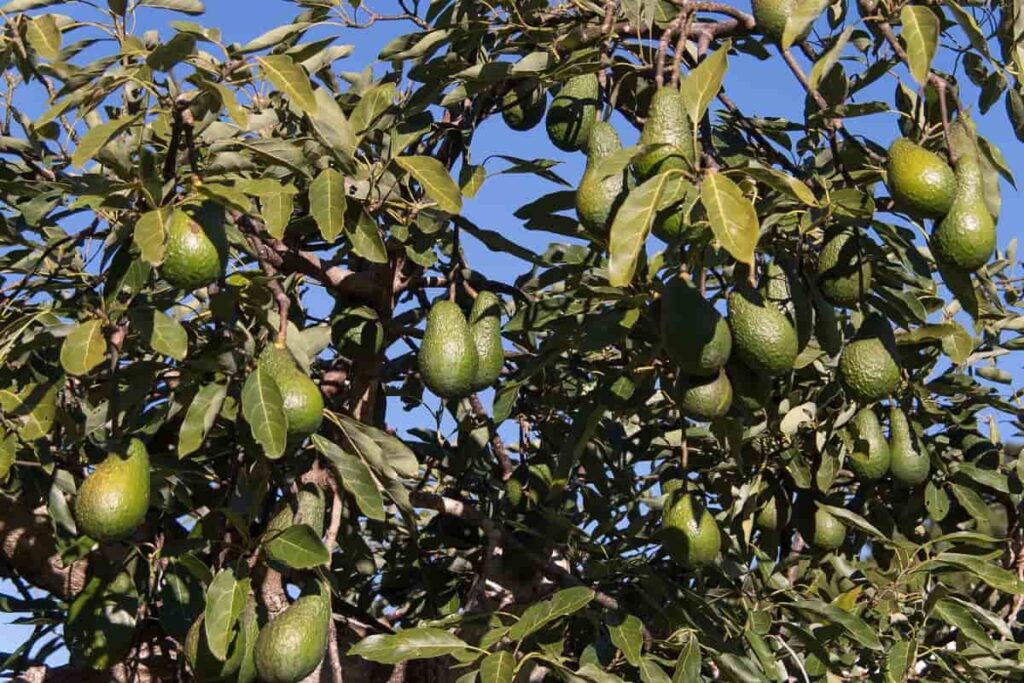
It’s a good idea to fertilize avocado trees on a regular schedule. For young trees, fertilize every 6-8 weeks during their first year, every 8-10 weeks in their second year, and every 3-4 months after that. For mature trees, fertilize every 3-4 months. Remember to follow the fertilizer package instructions and do a soil test before applying any fertilizer to determine the specific nutrient needs of your tree. Over-fertilization can damage the tree, so use the right amount of fertilizer.
Fertilizers for Avocados
- Compost: Compost is a natural fertilizer made from organic matter, such as plant debris, food scraps, and yard waste. It provides a balanced source of nutrients and helps improve soil structure.
- Well-rotted manure: Herbivorous animals, such as cows, horses, and goats, can be an excellent source of nutrients for avocado trees. Choose well-rotted manure to minimize the risk of burning the roots.
- Balanced organic fertilizers: Many organic fertilizers are explicitly formulated for avocado trees on the market. These fertilizers usually contain balanced nutrients, including nitrogen, phosphorus, and potassium.
- Synthetic fertilizers: Synthetic fertilizers can also provide nutrients to avocado trees. These fertilizers are often more concentrated than organic options and can be applied in smaller amounts.
It’s important to choose a fertilizer that is appropriate for your tree’s specific needs. A soil test can help determine which nutrients your tree lacks and how much fertilizer to use. Follow the instructions on the fertilizer package and avoid over-fertilization, which can damage the tree.
Chemical fertilizer for Avocado farming
Many chemical fertilizers can be used for avocado farming. It is important to choose a fertilizer appropriate for your tree’s specific needs and follow the instructions on the package. A soil test can help determine which nutrients your tree lacks and how much fertilizer to use. Over-fertilization can damage the tree, so use the right amount. Here are a few chemical fertilizers that are commonly used for avocado farming:
- Urea: Urea is a form of nitrogen fertilizer readily available to plants. It can be applied to the soil or sprayed directly on the tree’s leaves.
- Ammonium sulfate: This is another source of nitrogen that is often used in avocado farming. It can be applied to the soil or sprayed on the tree’s leaves.
- Potassium nitrate: Potassium nitrate is a source of potassium and nitrogen, which are important nutrients for avocado trees. It can be applied to the soil or sprayed on the tree’s leaves.
- Calcium nitrate: Calcium nitrate is a source of calcium and nitrogen, essential nutrients for avocado trees. It can be applied to the soil or sprayed on the tree’s leaves.
In case you missed it: Growing Red Chilli Organically in Andhrapradesh: Farming Practices and Production Management
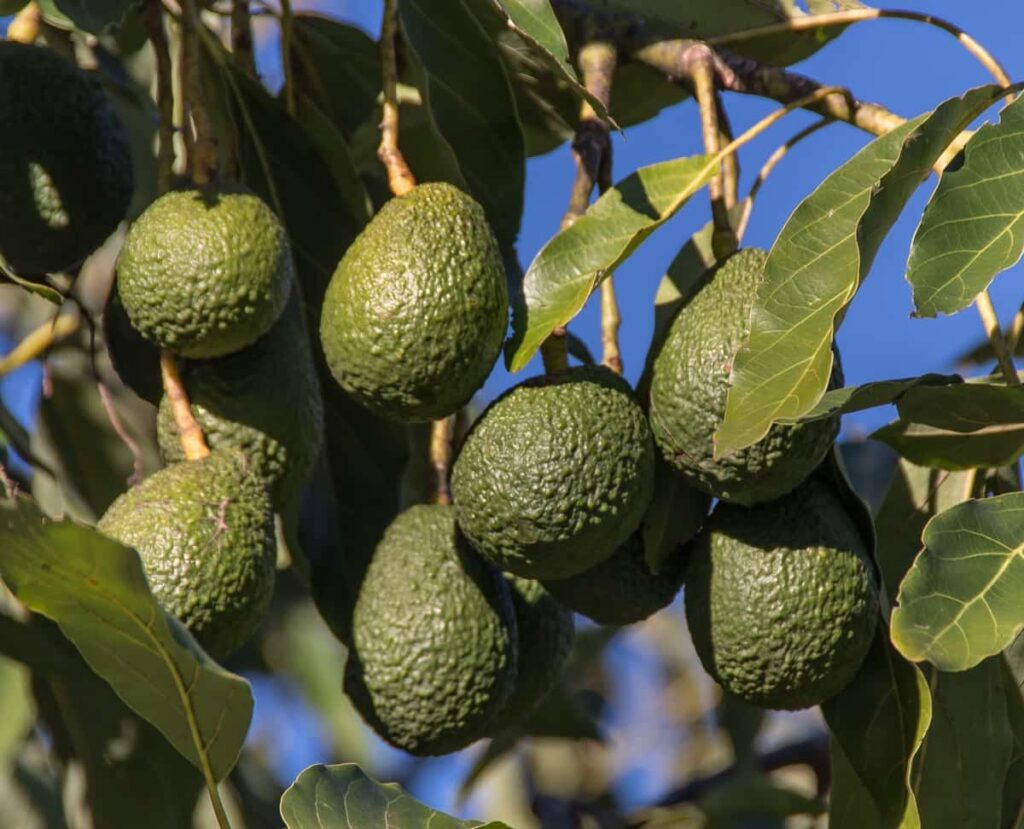
It is important to note that chemical fertilizers can negatively impact the environment and potentially harm beneficial insects and other wildlife. It’s always a good idea to use caution when applying chemical fertilizers and to follow all label instructions.
How do you improve the quality of avocado fruit?
- Provide the right growing conditions: Make sure your avocado tree is planted in well-draining soil and gets enough sunlight and water. Avoid extreme temperatures and excessive pruning.
- Fertilize properly: Avocado trees need a balance of nutrients to produce fruit. Follow the recommendations of a soil test and fertilize your tree according to its specific needs.
- Monitor for pests and diseases: Regularly check your tree for signs of them and take appropriate action to control them. Pests and diseases can damage the flowers and fruit, leading to reduced fruit sets.
- Plant-compatible avocado trees: Avocado trees require cross-pollination to produce fruit. Planting compatible avocado trees near your tree can help improve the fruit set.
- Protect the flowers and fruit: Use netting or other protective measures to prevent birds and other animals from eating the flowers or fruit of your tree.
Best Avocado fertilizer to Increase Yields
- Down to Earth Organic Citrus Fertilizer Mix is an organic, all-natural fertilizer specifically designed for fruit trees. It is said to help avocado trees grow thicker, stronger limbs, more extensive root systems, fuller foliage, and larger fruit.
- EarthPods Premium Fruit & Citrus Plant Food are pre-measured pods that contain a balanced mix of nutrients, minerals, microbes, and natural growth hormones. They can be inserted into the soil near the tree and break down slowly after watering.
- J R Peters Citrus Food Fertilizer is a balanced mix of nutrients that can be absorbed by the tree’s leaves and roots, leading to more robust root systems and thicker foliage. It is also suitable for trees damaged by drought or neglect.
- Epsoma Citrus-tone Plant Food is an organic formula made from natural materials specifically for fruit trees. It contains microbes that enrich the soil and provide essential nutrients for strong, healthy roots. It uses slow-release technology to provide nutrients for an extended period.
- Jobe’s Fruit & Citrus Fertilizer Spikes are another slow-release formula inserted into the soil near the tree’s roots. They contain a pre-measured, balanced mix of nutrients and do not give off much odor.
In case you missed it: Growing Onions Organically in Maharashtra: Cultivation Practices and Production Management
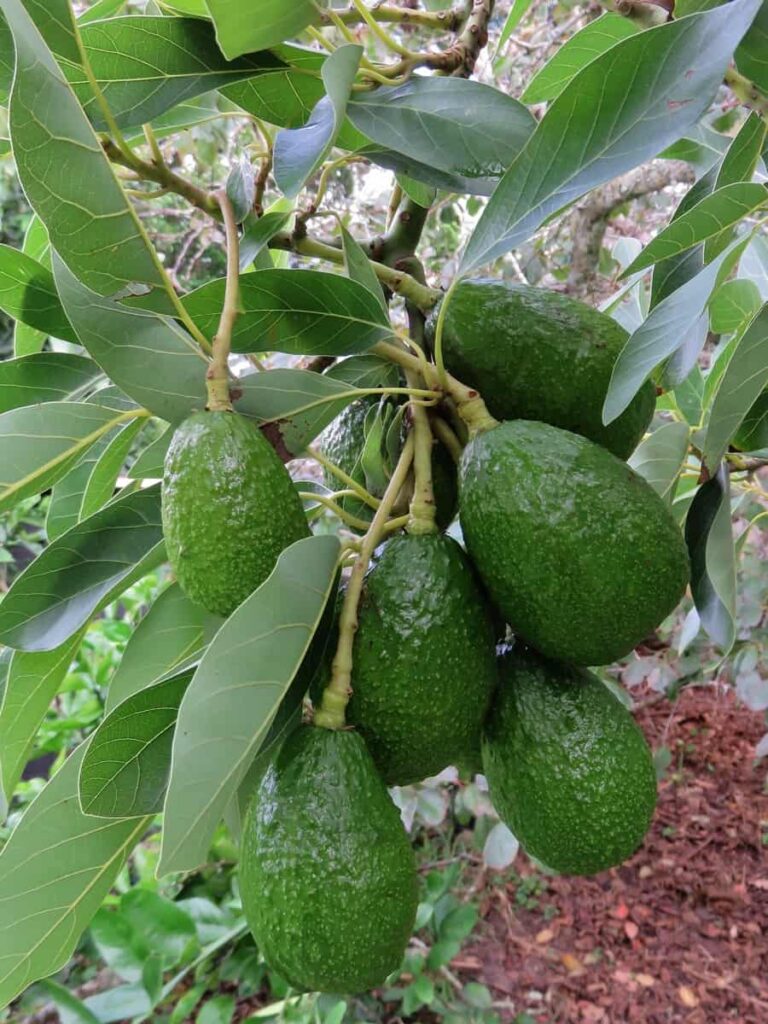
Tips and tricks for growing Avocado tree
- Prune your avocado tree regularly to remove dead or damaged branches and shape the tree. When the tree is dormant, it is best to prune it in the winter or early spring.
- Mulch the area around your avocado tree with organic material, such as wood chips or straw, to help retain moisture and suppress weeds.
- Protect your avocado tree from frost by covering it with a blanket or plastic sheet if frost is forecasted.
- Check your avocado tree regularly for signs of pests, such as aphids, mites, or scale. If you notice any pests, use a natural pest control method or contact a professional for treatment.
- Be careful when handling avocados, as the fruit is prone to bruising and can be damaged easily.
- Harvest your avocados when they are ripe, usually when they have turned a deep green or purple color and feel slightly soft to the touch.
- Sheep Farming Business Plan for Beginners
- Aquaponic Farming at Home: A Step-By-Step Guide
- Profitable Village Farming Business Ideas in 2024
- High-Yield Aquaculture: Fast-Growing Fish for Farming
- Effective Fish Pond Construction Techniques for Beginners
- Irrigation and Water Management in Pineapple Farming
- Blossom to Harvest: Mastering Flowering and Pollination in Papaya Farming
- Pig Fattening Essentials: From Selection to Sale for Beginners
- Raising Wagyu Cattle: A Complete Guide for Premium Beef Production
- Soil Types and Their Water Holding Capacity
- Optimizing Irrigation Schedules for Coconut Groves for Enhanced Yield
- Espresso Your Garden: Coffee Grounds for Healthier Acid-Loving Plants
- The Best Soil Mix for Snake Plants: How to Mix Your Own Snake Plant Soil
- Green Thumb Success: Expert Tips for Cultivating Greenhouse Beans All Year Round
- Bloom All Year Round: The Ultimate Guide to Indoor Hyacinth Care
- Eco-Friendly Gardening: How to Make Liquid Fertilizer from Kitchen Waste
- Ultimate Guide to Grow Anise in Pots: Explore Seed Propagation to Harvesting
- Guide to Raising Chester White Pigs: Discover Breed Facts to Growth Management
- Mastering the Elegance: The Ultimate Guide to Weeping Cherry Tree Care, Planting, and Maintenance
- Ultimate Guide to Planting Garlic in Grow Bags: Growing Strategies for Beginners
- How to Fix Spider Plant Leaf-Related Problems: Natural and Organic Remedies
- 10 Reasons Why Your Tulsi Plant is Shedding Leaves: Home Remedies and Solutions
- Optimizing Growth and Yield: The Advantages of Palm Bunch Ash Fertilizer
- Utilizing Neem Oil Extract as a Natural Pesticide for Hydrangea
- From Soil to Harvest: Various Ways in Which Farmers Can Use AI Tools
- Steps to Encourage and Induce Citrus Flowers: A Comprehensive Guide
- How to Fix Snake Plant Leaf-Related Issues: Natural and Organic Remedies
- Transform Your Garden into a Fragrant Oasis with Raat Ki Rani (Night Blooming Jasmine)
- Discover the Ideal Chicken Breeds for Philippine Farms
- How to Create a Poultry Egg Farm Business Plan for Profits
- Grow Lemon Cucumbers Like a Pro: Insider Techniques for Bountiful Yields
- Ultimate Guide to Caring for Your Pink Princess Philodendron: Tips for Thriving Variegation
- Areca Nut Profit Per Acre: Calculating Yield and Cost of Cultivation
- How Kaveri Chicken is Becoming a More Profitable Breed in Indian Backyards
- Transform Your Barn: 9 Steps to Convert a Horse Stall into a Chicken Coop
- Exploring Suffolk Sheep Disadvantages with Limitations and Challenges
